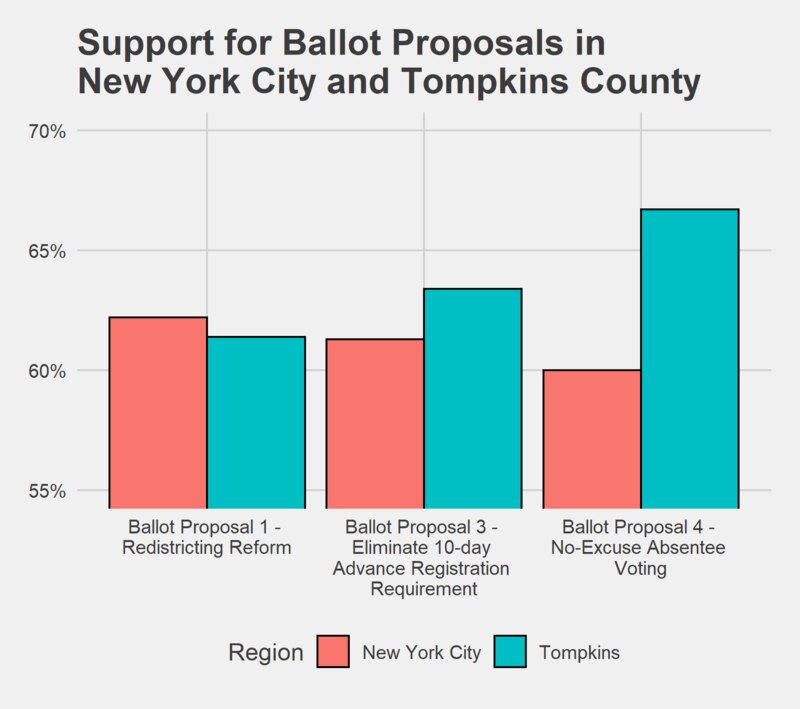New York Democrats were left reeling from the November failure of three ballot measures that would have expanded voting access in the state and reformed redistricting practices. But Tompkins County, home of Ithaca, presents a worthwhile case study for the party, which hopes to resurrect the ballot measures in the next statewide election. In Tompkins, all three measures passed with over 60 percent of the vote, a far higher rate than the rest of the state.
“I was taken aback by the lack of communication to people throughout the state of how important these ballot proposals were for the 2022 midterms,” said Stacey Dumas, the acting chair of the Tompkins County Democratic Committee. Dumas said the chaos inside the state Democratic Party in the wake of Gov. Andrew Cuomo’s resignation in August is partially to blame for the party’s failure to organize around the measures. She believes the turnover distracted the party from promoting the potential for the measures to revamp New York’s outmoded voting processes.
The defeat of the ballot proposals means that New Yorkers will not have the option to vote by mail without a valid excuse in the 2022 elections, and will still have to register to vote at least 10 days before Election Day. The redistricting process will also remain the same, which Democrats — including Dumas — say may mean candidates will run out of time to collect signatures and mount their campaigns. Maps are not expected to be finalized until April, only two months before the June 28 primary.
While Tompkins County is majority Democrat — around 75 percent of its voters cast their ballots for President Joe Biden in November — party affiliation does not completely account for the size of support for the ballot measures. In New York City, where more than 75 percent of voters cast their ballots for Joe Biden, support for the two vote-expansion measures lagged behind support in Tompkins. Some 66.7% of voters in Tompkins supported allowing no-excuse absentee voting, compared with 60% in New York City. And more than 63% in Tompkins supported eliminating the 10-day-advance registration requirement versus 61.3% in New York City. One likely reason for these NYC lags was the city’s lowest-ever voter turnout in 2021.

Dumas believes that her county’s highly educated voter base — Tompkins is home to Cornell University and Ithaca College — and the local party’s focus on the ballot measures as a priority generated a higher rate of support. Dumas said the county Democratic Party relies heavily on a monthly newsletter, sent to about 1,600 subscribers, and credits it with helping increase awareness of the ballot proposals.
Tompkins County Republican Party Chair Michael Sigler was unsurprised that Tompkins County led the state in voting in favor of the ballot proposals. While his party “tried to break down” the ballot proposals for Republican voters, characterizing them as “over broad” and missing appropriate security measures around absentee voting, he agreed that the urgency of the messaging among Democrats in the area and the area’s high rate of education made the difference. “Tompkins County sets its own trail,” he said. “That doesn’t mean that it’s the correct trail, but it sets its own trail.”






